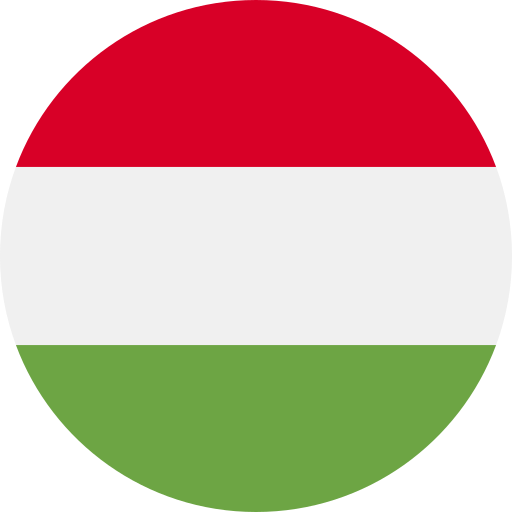Key Takeaways
- Historical Roots: Hungarian is part of the Uralic language family, stemming from Finno-Ugric tribes that settled in Central Asia before migrating to the Carpathian Basin around the 9th century.
- Cultural Influences: The language has integrated vocabulary and grammatical elements from Turkic and Slavic languages, particularly during historical periods such as Ottoman rule and interactions with neighboring cultures.
- Medieval Evolution: The medieval period saw significant changes in Hungarian due to Latin influence, which enriched its vocabulary with ecclesiastical terms and helped establish written forms of the language.
- Modern Adaptations: Contemporary Hungarian reflects influences from German and Latin, especially during Austro-Hungarian rule, as well as an influx of English terms driven by globalization and digital media.
- Unique Linguistic Features: Hungarian is characterized by its vowel harmony system, agglutination of words through prefixes and suffixes, and a rich array of 18 grammatical cases that enhance expression.
- Diverse Vocabulary: The language maintains a core Uralic lexicon while incorporating numerous loanwords from various cultures, showcasing its adaptability throughout history.
Ever wondered how the Hungarian language, with its unique grammar and vocabulary, has transformed over the centuries? Its evolution is a fascinating journey that reflects Hungary’s rich history and cultural influences. From ancient roots to modern-day usage, understanding this evolution can deepen your appreciation for the language and its speakers.
Historical Background of the Hungarian Language
The Hungarian language boasts a complex history that reflects the diverse cultural influences of its speakers. Understanding this background enriches your appreciation for its unique characteristics.
Origins and Roots
Hungarian belongs to the Uralic language family, which includes Finnish and Estonian. The origins trace back to the Finno-Ugric tribes in Central Asia, migrating westward around the 9th century. By settling in the Carpathian Basin, they established a distinct linguistic identity that set them apart from neighboring Indo-European languages. Over time, this foundation shaped modern Hungarian grammar and vocabulary.
Influence of Turkic and Slavic Languages
Throughout its evolution, Hungarian absorbed elements from Turkic and Slavic languages due to historical interactions with various cultures. For instance, during the Ottoman Empire’s rule in Hungary (16th-17th centuries), many Turkish words entered everyday use. Similarly, Slavic languages contributed vocabulary as Hungary engaged with neighboring nations over centuries. This blending of linguistic influences enriched Hungarian while maintaining its core structure intact.
Understanding these language dynamics reveals how historical events have molded modern communication within Hungary today.
Development Through the Ages
The Hungarian language has undergone significant changes throughout its history, shaped by various cultural and historical influences. Understanding these developments offers valuable insight into how the language reflects Hungary’s unique identity.
Evolution in the Medieval Period
During the medieval period, Hungarian evolved significantly. The introduction of Latin as a written language influenced vocabulary and grammar. Many ecclesiastical terms entered Hungarian, enriching its lexicon. By the 13th century, written documents in Hungarian began to appear more frequently, showcasing early linguistic forms and variations. The influence of neighboring Slavic languages also became evident during this time; common words adopted from Slavic enriched everyday communication.
Changes During the Ottoman Rule
The Ottoman rule, lasting from the 16th to the 17th century, marked another transformative phase for Hungarian. This era brought substantial Turkish influence due to political and social interactions between cultures. Numerous loanwords related to administration, agriculture, and everyday life integrated into Hungarian vocabulary during this time. While maintaining core grammatical structures, these borrowed terms reflect a blending of cultures that characterized Hungary under Ottoman governance.
Understanding these phases in development not only highlights linguistic shifts but also illustrates how external factors can shape a language over centuries.
Modern Influences on Hungarian
Modern Hungarian reflects a blend of historical and contemporary influences, showcasing its adaptability over time. This evolution continues to shape the language significantly.
Borrowings from German and Latin
German influence on Hungarian spans several centuries, particularly during periods of Austro-Hungarian rule. Many technical terms, administrative vocabulary, and everyday expressions entered Hungarian from German. Examples include words like „ablak” (window) and „konyha” (kitchen), which illustrate how these borrowings became integrated into daily life. Similarly, Latin’s role in shaping Hungarian cannot be understated; it introduced numerous terms related to education, science, and religion. Words such as „universitas” (university) highlight this cultural exchange that enriched the language.
Impact of Globalization
Globalization has further accelerated changes in modern Hungarian. The digital age brings exposure to English-language media and culture, leading to an influx of loanwords and expressions from English. Phrases related to technology, business practices, and social trends have become commonplace in everyday conversation. For example, terms like „internet,” „marketing,” or even “cool” demonstrate how quickly new concepts find their way into the language. This integration shows a dynamic responsiveness to global trends while maintaining the essence of Hungarian identity.
Modern influences—from historical borrowings to contemporary globalization—continue to shape the evolution of the Hungarian language, reflecting its rich tapestry woven through various cultures over time.
Linguistic Characteristics
Hungarian boasts distinct linguistic features that set it apart from many other languages. Its unique grammar and phonetic structure contribute significantly to its identity.
Phonetic and Grammatical Features
Hungarian employs a rich vowel harmony system, where vowels within a word harmonize to either front or back categories. This characteristic shapes pronunciation and can affect meaning. The language also utilizes agglutination, which means you can combine various prefixes and suffixes to form complex words. For instance, the word „ház” (house) transforms into „háznak” (to the house) when adding appropriate endings. Additionally, Hungarian maintains 18 grammatical cases, enabling precise expression of relationships between nouns in sentences.
Unique Vocabulary
The vocabulary of Hungarian is equally fascinating, reflecting influences from various cultures throughout history. While it retains a core Uralic lexicon, you’ll find numerous loanwords from Turkic, Slavic, Latin, and German origins. For example, terms like „konyha” (kitchen) showcase German influence while „egyetem” (university) derives from Latin roots. Such diversity enriches everyday speech and highlights the language’s adaptability over time.
Understanding these characteristics not only enhances your appreciation for Hungarian but also provides insight into how historical events shaped its evolution into the vibrant language used today.
Conclusion
The evolution of the Hungarian language is a testament to its resilience and adaptability. As you explore its rich history you’ll uncover how various cultural influences have shaped its unique characteristics. The blend of Uralic roots with elements from Turkic, Slavic, Latin, and German creates a vibrant linguistic tapestry that’s both fascinating and complex.
Your understanding of these changes can deepen your appreciation for not just the language itself but also the people who speak it. Embracing this journey through time allows you to connect more meaningfully with Hungary’s cultural heritage while recognizing the ongoing impact of globalization on modern communication in Hungarian.
Frequently Asked Questions
What is the origin of the Hungarian language?
The Hungarian language originates from the Uralic language family, specifically linked to the Finno-Ugric tribes that migrated to the Carpathian Basin in the 9th century. This rich history contributes to its unique characteristics and evolution over time.
How has foreign influence shaped Hungarian vocabulary?
Hungarian vocabulary has been significantly influenced by Turkic, Slavic, Latin, and German languages. Each of these cultures introduced new words during different historical periods, such as the Ottoman rule and Austro-Hungarian Empire, enriching modern Hungarian with diverse expressions.
What are some key linguistic features of Hungarian?
Hungarian is known for its vowel harmony system, agglutinative structure, and 18 grammatical cases. These features allow for complex word formations and precise expression of relationships between nouns, making it distinct from many other languages.
How did Latin impact the development of Hungarian?
Latin enriched Hungarian vocabulary and grammar during medieval times when it was introduced as a written language. It contributed numerous terms related to education, science, and religion that are still present in modern usage today.
In what ways has globalization affected modern Hungarian?
Globalization has led to an influx of English loanwords into modern Hungarian. Terms related to technology and social trends—like „internet” and „marketing”—demonstrate how contemporary influences continue to shape this vibrant language while retaining its unique identity.







